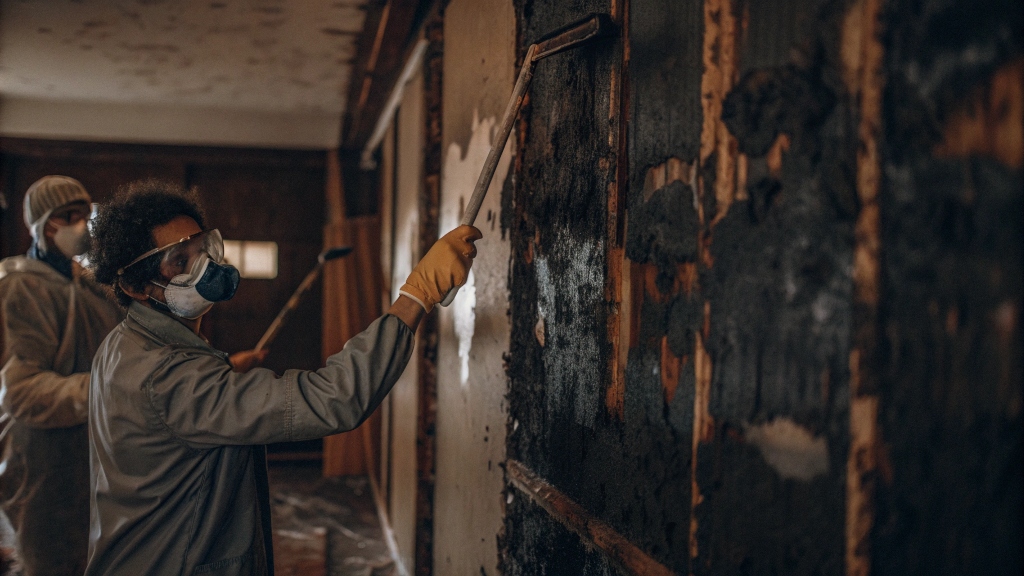Black Mold Removal Made Easy: What You Need to Know Before You Start Cleaning

Black mold is a serious concern for homeowners and property managers. It can develop in damp areas, spreading quickly and posing health risks to those exposed. If left untreated, it can lead to respiratory problems, allergies, and even structural damage to your home. Understanding the right techniques for handling this issue can help ensure a safe and effective approach to mold removal.
Understanding Black Mold
Black mold, also known as Stachybotrys chartarum, thrives in moist and poorly ventilated spaces. Regularly cleaning black mold in these areas can prevent further issues – bathrooms, basements, and areas affected by leaks or flooding. Unlike other types of mold, black mold releases mycotoxins, which can cause significant health issues if inhaled over time.
Signs You Have a Black Mold Problem
Before you begin the process, it’s important to identify whether you’re dealing with black mold. Some common signs include:
- A musty or earthy smell in certain areas of your home.
- Dark green or black patches on walls, ceilings, or floors.
- Increased allergy symptoms such as sneezing, coughing, or itchy eyes.
- Persistent headaches or difficulty breathing when indoors.
If you notice these warning signs, it’s time to take immediate action. As soon as possible clean black mold as soon as possible to prevent health risks.
Safety First: Precautions to Take Before You Start
Removing mold without the right precautions can be hazardous. Before you start, make sure to:
- Wear protective gear, including gloves, goggles, and an N95 mask.
- Ensure proper ventilation in the affected area to reduce spore inhalation.
- Seal off contaminated spaces using plastic sheeting to prevent mold from spreading.
- Keep children and pets away from the affected areas during cleanup.
Taking these precautions is crucial for cleaning black mold safely and effectively.
Effective Steps to Clean Black Mold
- Identify the Source of Moisture
Mold thrives in damp conditions, so it’s crucial to fix any leaks or water damage before beginning the cleaning process. Addressing the source will help prevent mold from returning. Cleaning black mold without fixing moisture issues will not solve the problem.
- Prepare a Cleaning Solution
There are various solutions that can be used for cleaning black mold, including:
- A mixture of white vinegar and water.
- Hydrogen peroxide for a natural disinfectant effect.
- Commercial mold removers for tough infestations.
- A bleach solution (one part bleach to ten parts water) for non-porous surfaces.
- Scrub the Affected Area
Apply the cleaning solution with a brush or sponge and scrub the surface thoroughly. Be sure to use firm, circular motions to lift mold spores effectively. Clean black mold thoroughly to prevent regrowth.
- Dry the Area Completely
After cleaning black mold, make sure the area is fully dried using fans, dehumidifiers, or natural ventilation. Mold can regrow quickly in damp spaces, so proper drying is essential. Prevent moisture buildup to avoid repeat occurrences.
- Dispose of Contaminated Materials
If mold has deeply penetrated porous materials like drywall or carpet, it’s best to remove and replace them. Seal contaminated items in plastic bags before disposal to prevent further spread. Cleaning black mold from surfaces that are too damaged may not be effective, and replacement might be necessary.
Preventing Future Black Mold Growth
Once you’ve managed to clean black mold, it’s essential to take preventive measures to stop it from returning. Here are some effective strategies:
- Control indoor humidity: Keep humidity levels below 50% using a dehumidifier.
- Improve ventilation: Use exhaust fans in bathrooms and kitchens to reduce moisture buildup.
- Fix leaks immediately: Regularly check pipes, roofs, and windows for leaks.
- Use mold-resistant paint: Applying mold-resistant paint to walls and ceilings can provide added protection.
- Regular cleaning: Keep damp areas like bathrooms and basements clean and dry to discourage mold growth. That is why Cleaning black mold regularly ensures a safe living environment.
When to Call a Professional
While minor cases of mold can be handled independently, some situations require professional intervention. If mold covers an area larger than 10 square feet, has spread into HVAC systems, or continues to return despite cleanup efforts, it’s best to contact a mold remediation specialist. Professionals have the necessary equipment and expertise to eliminate mold safely and prevent future growth. Please carefully clean black mold with the help of an expert . Please don’t hesitate to seek expert help when needed.
Final Thoughts
Black mold removal can be manageable with the right approach and precautions. Identifying the problem early, using effective cleaning methods, and taking preventive steps can help keep your home mold-free. However, if the situation seems severe, don’t hesitate to seek professional assistance. A clean and well-ventilated home is key to maintaining a healthy living environment for you and your family.









